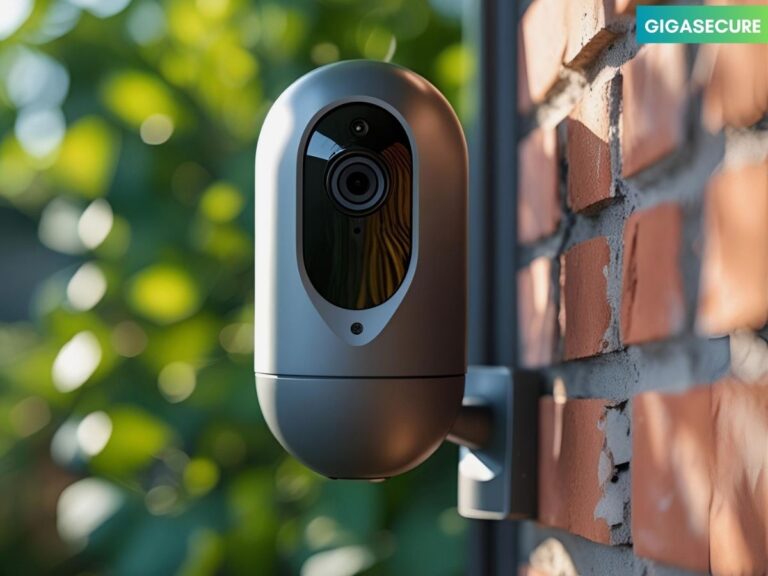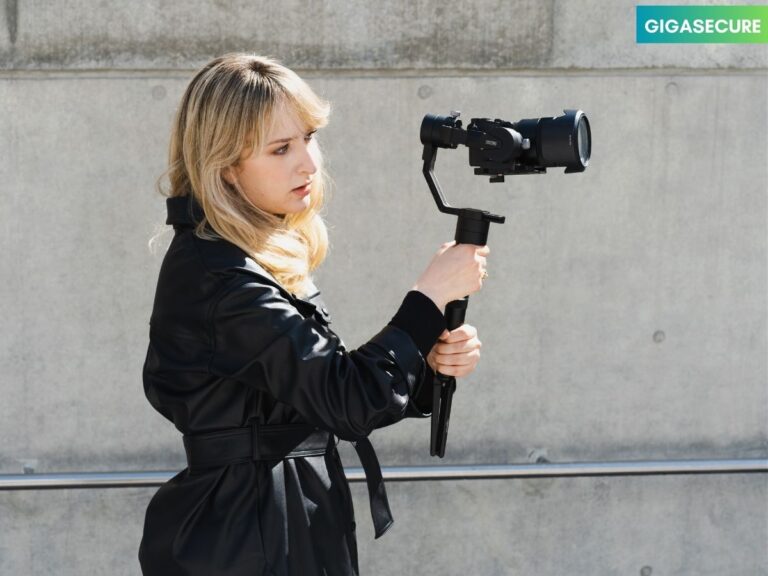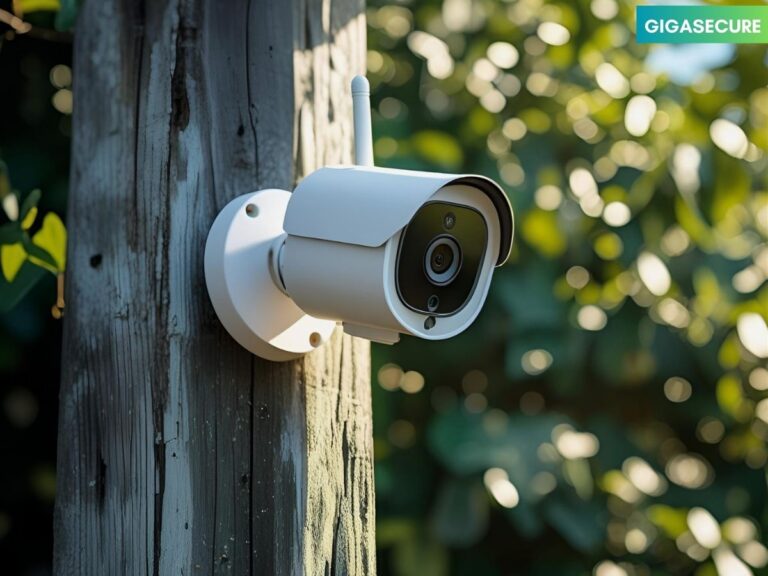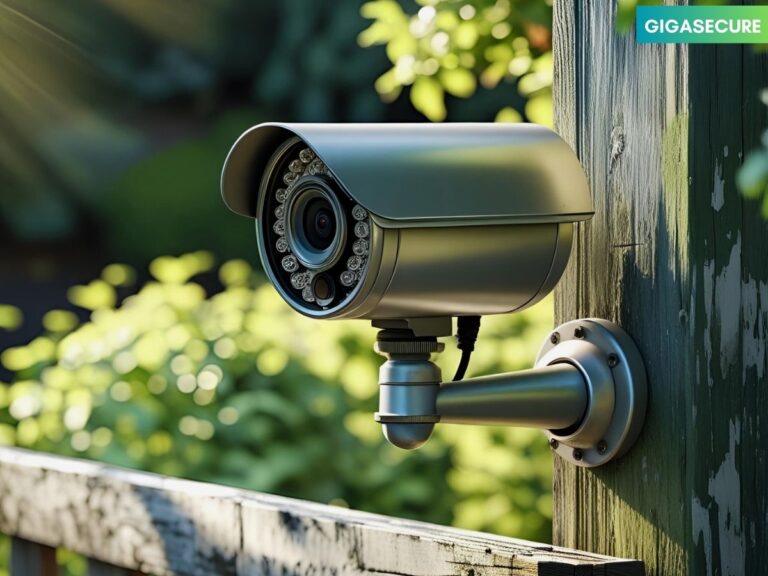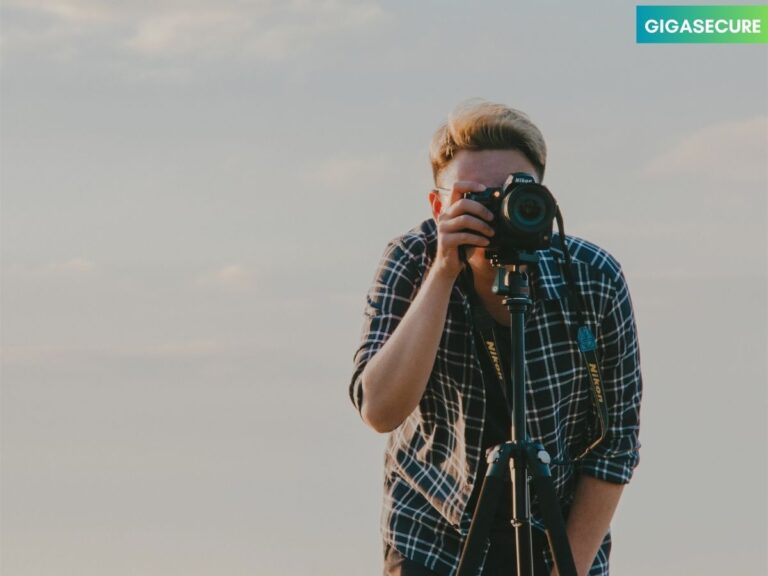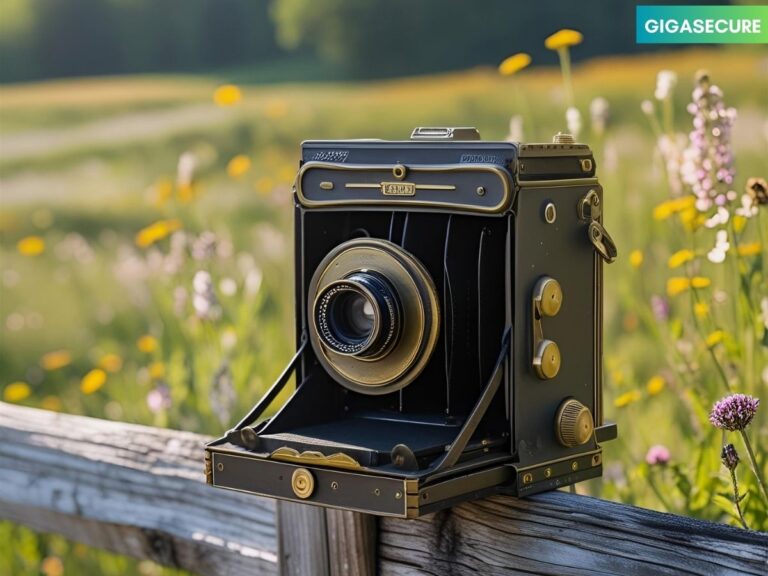Can Outdoor Cameras Withstand Fog & Snow?
I’ve worked with outdoor surveillance systems and seen how weather affects cameras. Trying to fix a camera damaged by fog, snow, or moisture is tough.
In this article, I’ll share my research on the top weatherproof outdoor cameras for various weather.
Outdoor security cameras need to handle the weather well. They keep your home or business safe. I’ll test and review cameras to find the best ones for tough weather.
Key Takeaways
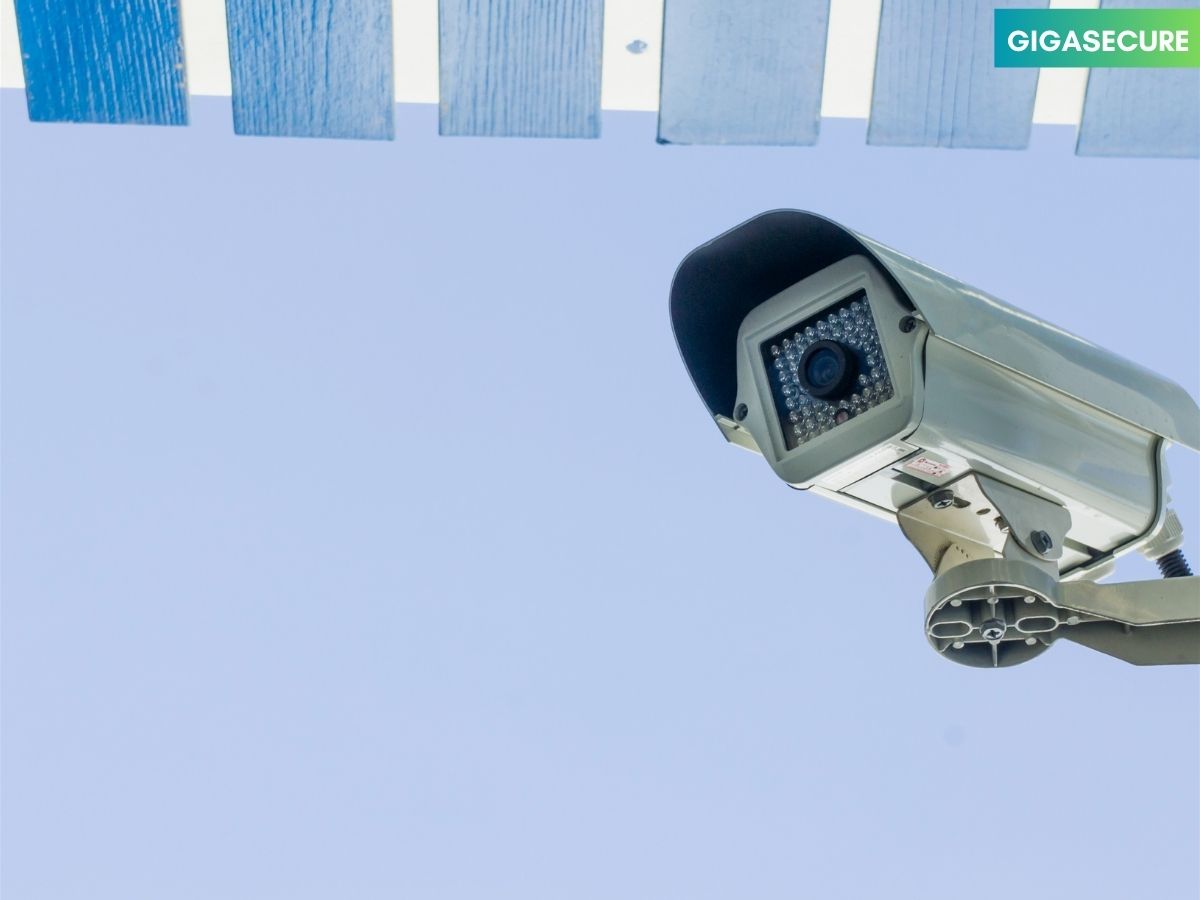
The Challenge of Weather for Outdoor Surveillance

Weather greatly affects how well outdoor surveillance cameras work. Fog, snow, and moisture can lower image quality. It’s hard to spot objects or people. Knowing how weather impacts cameras is key to their best performance.

Why Weather Conditions Matter for Camera Performance
Weather is critical for outdoor camera success. Fog-proof security cameras keep images clear in fog. Snow-resistant surveillance cameras handle heavy snow without losing image quality. Cameras must be tough to keep watching areas all the time.
| Weather Condition | Impact on Camera Performance | Required Camera Feature |
|---|---|---|
| Fog | Reduced visibility | Fog-proof design |
| Snow | Image distortion or obstruction | Snow-resistant housing |
| Extreme Moisture | Camera damage or corrosion | Waterproof or IP67 rating |
Common Weather-Related Issues Affecting Image Quality
Weather can mess with outdoor camera images. Fog can fog up the lens, and snow can block the view. Moisture can harm the camera. It’s important to pick cameras that can handle weather and keep images clear.
Understanding Weather-Resistant Camera Technology
Weather-resistant camera tech is key for keeping watch in all kinds of weather. Outdoor cameras must have special features to fight off the elements.

IP Ratings Explained: What They Really Mean
IP ratings are important for weather-resistant cameras. They show how well a camera guards against dust and water. For example, an IP67 camera can handle dust and water up to 1 meter deep for 30 minutes.
Knowing IP ratings helps pick the right camera for your weather.
Housing Materials and Design Features
The housing of a camera is vital for its weather resistance. Moisture-resistant outdoor cameras use strong materials like aluminum or polycarbonate. These materials keep the camera safe from the weather.
Features like sealed joints and drainage systems also keep water out.
Lens Technology for Adverse Conditions
Lens tech is also key for cameras in bad weather. All-weather outdoor security cameras use special lenses. These lenses cut down glare and improve images in fog or snow.
Advanced lens technology lets cameras take clear pictures in tough weather.
Knowing about weather-resistant camera tech helps choose the right outdoor security cameras.
My Testing Methodology
To test outdoor cameras in extreme weather, I created a detailed plan. I picked various camera models, tested them in different places, and checked their performance against certain standards.
Camera Models Selected for Testing
I picked a mix of outdoor cameras from top brands. They had features like IP66 rating, night vision, and weather resistance. The cameras I tested were:
- Axis P1435-LE: Known for its weather-resistant housing and high-quality video.
- Hikvision DS-2CE16C0T-IRP: Features a robust design and IR night vision.
- Reolink Argus 3 Pro: Offers wireless connectivity and weather resistance.
Testing Environments and Conditions
I tested the cameras in many settings to mimic real-world scenarios. This included:
- Foggy conditions using a fog machine.
- Snowy conditions in a controlled outdoor setting.
- High humidity and rain using a water spray system.

Evaluation Criteria
I judged the cameras on several key points. These were:
- Image quality in bad weather.
- Weather resistance and durability.
- Night vision performance in low light.
This helped me see how each camera handled extreme weather.
How Outdoor Cameras Handle Fog, Snow, and Extreme Moisture
When I tested outdoor cameras, I saw how they handled tough weather like fog and snow. It’s key for them to keep images clear and work well in harsh conditions.

Performance in Dense Fog Conditions
In thick fog, seeing outdoor cameras can be hard. Cameras with advanced tech kept images clearer than others without it.
Key features like infrared and wide dynamic range helped a lot. They let cameras capture details even when it’s very foggy.
Snow Accumulation and Image Clarity
Snow on the camera lens can mess up the image. Cameras with heated lenses or special coatings did better in snow. These features stop snow from sticking.
The camera’s design was also important. Some had a design that let snow slide off easily.
Resistance to Moisture and Rain
Outdoor cameras face a lot of rain and humidity. Cameras with a high IP rating did well in wet conditions.
Cameras with a strong seal around the lens and body kept water out. This helped them work well even in very wet weather.
Camera Performance in Extreme Cold
Outdoor cameras must be tough in freezing temperatures. We need to look at what makes them work well in the cold.

Outdoor cameras face big challenges in extreme cold. Knowing these challenges helps pick the best camera for your needs.
Battery Life in Sub-Zero Temperatures
Battery life is a big worry in the cold. Low temperatures can make batteries less efficient, cutting down how long they last. Cameras with cold-weather batteries or other power sources like solar panels work better.
Startup and Operation Issues
Starting and working in the cold can be tough for outdoor cameras. Mechanical parts may slow down or stop in the cold, making it hard to move or zoom. Cameras built to handle the cold do better.
Thermal Management Systems
Some cameras have special systems to keep them from freezing. These systems help cameras work well even in extreme cold.
In summary, how well outdoor cameras do in the cold depends on their batteries, build, and thermal systems. Knowing these helps choose the right camera for cold places.
Heat and Humidity Challenges
High temperatures and humidity can affect outdoor cameras. It’s key to know how to handle these issues. I tested many cameras and saw big differences in how they handled heat and humidity.
Preventing Condensation Inside Camera Housing
Condensation inside the camera can lower image quality and harm the camera. To avoid this, moisture-resistant outdoor cameras use special housing designs. These include sealed enclosures or desiccant materials.
Some cameras have a double-layered housing for air flow and moisture protection. Others include a desiccant pack to soak up moisture.
Performance in High Humidity Environments
Cameras in humid areas need strong designs to keep images clear. I tested several in humid conditions. Those with all-weather outdoor security cameras certifications did best.

| Camera Model | Humidity Resistance | Image Quality |
|---|---|---|
| Camera A | IP67 | Clear |
| Camera B | IP66 | Slightly Blurred |
| Camera C | IP68 | Clear |
Heat Dissipation Solutions
Keeping cameras cool is vital in hot temperatures. Some use passive cooling like heat sinks. Others have active cooling with fans.
The choice of cooling method depends on the camera’s design and use. For example, a camera for very hot places might use both passive and active cooling.
Software and AI Solutions for Weather Challenges
Weather is getting more unpredictable, making software and AI key for outdoor cameras. These cameras now use advanced tech to work better in bad weather.
Image Enhancement Technologies
Image tech is vital for better outdoor camera footage in bad weather. Defogging, contrast tweaks, and noise reduction help a lot. For example, AI adjusts settings for clearer images in dark or foggy conditions.
Smart Detection in Poor Visibility
Outdoor cameras now have smart detection for when it's hard to see. AI can spot and follow objects even in fog, snow, or rain. This is great for keeping an eye on things when it's hard to see.
Cloud Processing vs. On-Device Processing
Video data can be processed on the camera or in the cloud. Cloud processing uses strong servers, but needs internet. On-device processing works fast without internet, but is limited by the camera’s power.
| Processing Method | Advantages | Disadvantages |
|---|---|---|
| Cloud Processing | Scalable, powerful processing | Dependent on internet connectivity, possible delay |
| On-Device Processing | Fast, works without internet | Limited by camera’s hardware |
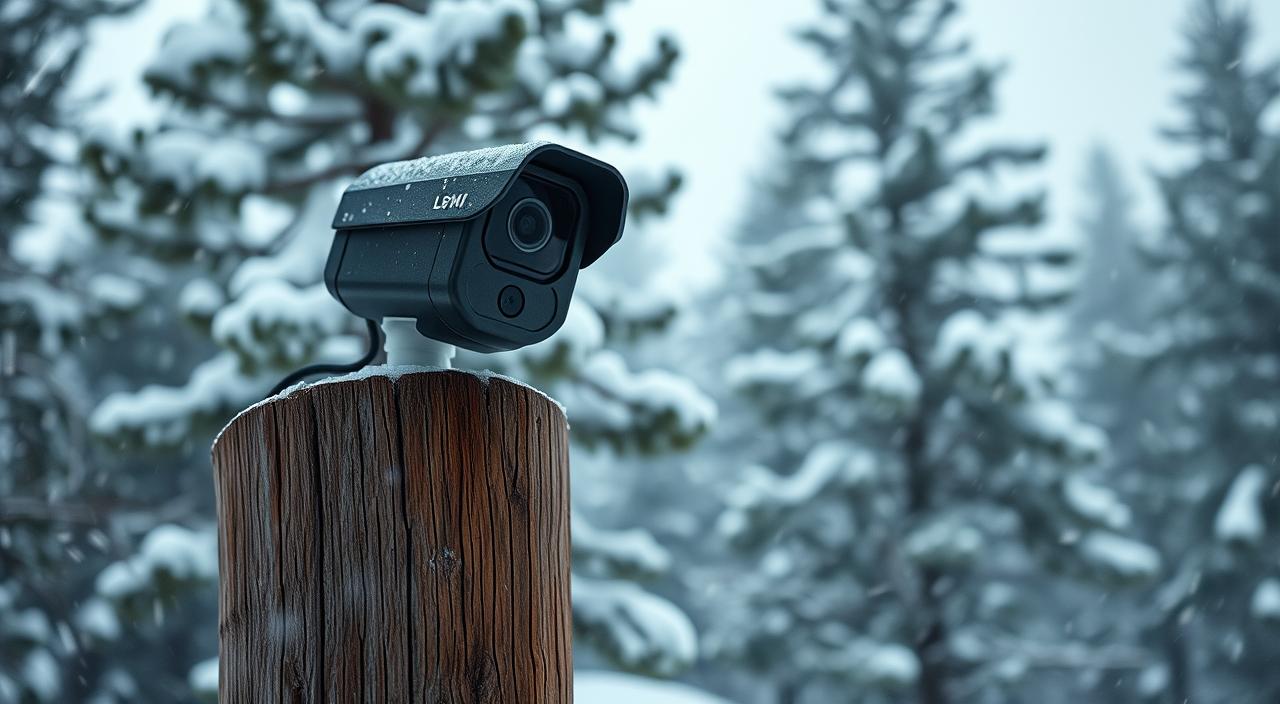
In summary, software and AI are making outdoor cameras better in tough weather. They use tech to improve image quality and detection, even in bad weather.
Top-Performing Cameras for Different Weather Conditions
I’ve tested many outdoor cameras and found the best ones for extreme weather. These cameras work well in fog, snow, and high moisture. They’re perfect for tough weather conditions.

Best Cameras for Foggy Environments
Cameras with advanced tech do well in fog. The Axis P1435-LE stands out, giving clear images in thick fog. Its design and lens reduce fog’s impact on pictures.
Top Performers in Snowy Conditions
Good snow cameras have strong housing and heating. The Hikvision DS-2CE16C0T-IRP is great, with an IP67 rating and clear images under snow.
“The right outdoor camera can make all the difference in security surveillance, even in tough weather.”
Most Reliable Cameras for High Moisture Areas
For wet places, cameras need to be waterproof and resistant to corrosion. The Dahua IPC-HFW5241E is top-notch, with an IP68 rating and design that keeps moisture out.
All-Weather Champions
Some cameras are great in many weather types. The Bosch Flexidome IP series is versatile and reliable, working well in cold and humid weather.
| Camera Model | Fog Performance | Snow Performance | Moisture Resistance |
|---|---|---|---|
| Axis P1435-LE | Excellent | Good | Excellent |
| Hikvision DS-2CE16C0T-IRP | Good | Excellent | Good |
| Dahua IPC-HFW5241E | Good | Good | Excellent |
| Bosch Flexidome IP | Excellent | Excellent | Excellent |
Choosing the right outdoor camera for extreme weather is key. Look at weather resistance, image quality, and extra features like heating. Cameras made for specific weather challenges ensure reliable surveillance.
FAQ Of Can Outdoor Cameras Withstand Fog & Snow?
What are the most important features to look for in a weatherproof outdoor camera?
Look for an IP67 or higher rating, durable materials, and special lenses. These features help the camera handle bad weather.
How do outdoor cameras perform in dense fog conditions?
Cameras with advanced tech and fog-proof design stay clear in fog. Some might see less, but the best ones work well.
Can outdoor cameras withstand heavy snowfall and freezing temperatures?
Yes, many cameras are made for snow and cold. Look for snow-resistant design, thermal systems, and an IP67 rating.
How do outdoor cameras handle extreme moisture and rain?
Cameras with moisture-resistant design and IP67 rating can handle rain and moisture. Some have special coatings to keep water out.
What is the difference between cloud processing and on-device processing for outdoor cameras?
Cloud processing sends video to the cloud for processing. On-device processing does it right on the camera. Cloud offers more analytics, but on-device is faster.
Are there any outdoor cameras that can perform well in all-weather conditions?
Yes, some cameras are made for all weather, including fog, snow, and rain. They use advanced tech and weather-resistant design.
How can I ensure my outdoor camera continues to function properly in extreme weather conditions?
Clean the lens and update software regularly. Choose a camera with a strong design and weather-resistant features to avoid damage.
Conclusion
After testing many outdoor cameras, some really shine in fog, snow, and wet conditions. It’s key to pick a camera that lasts in all weather. This ensures it works well for a long time.
Top cameras have strong housing, advanced lenses, and smart software. For example, those with IP67 or higher ratings fight off moisture and weather damage well.
Think about the weather your camera will face. For fog, choose one with better image processing. For snow, a sturdy camera with snow-removal is best. In wet places, a camera that seals moisture is a must.
Knowing how cameras handle weather helps you pick the right one. The durability of outdoor cameras in various conditions is key. It keeps your surveillance system working well for a long time.

